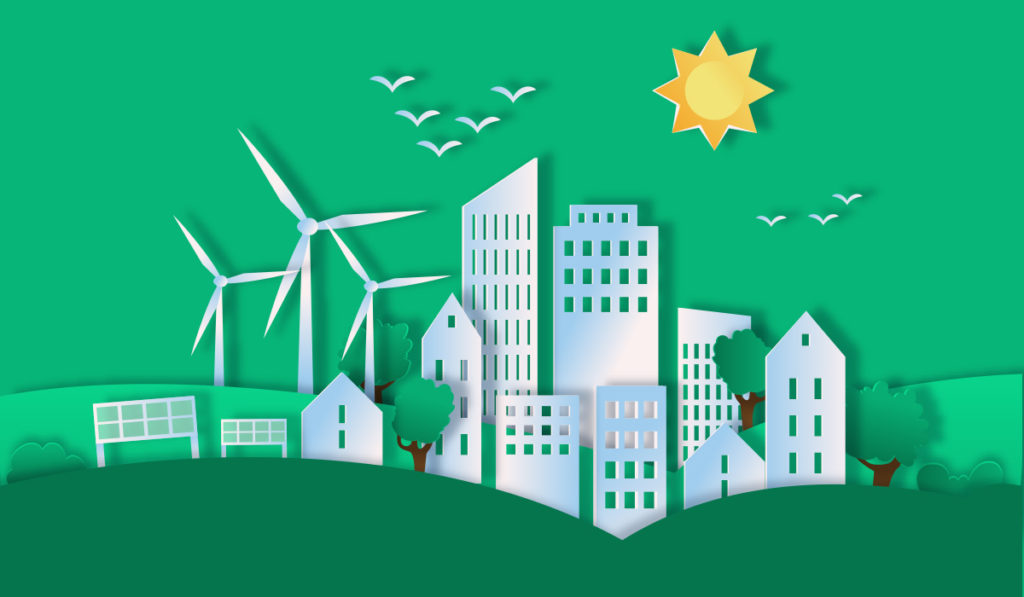
The climate crisis has not gone away, nor has the ever-increasing income gap between the rich and poor. The pandemic has magnified these challenges as governments struggle to also contain the spread of the virus while managing the economic fallout, supporting workers and ensuring continuity of schooling of children. Despite the gloom, there is good news. With the right choices, governments and businesses of all sizes can address all of these crises simultaneously by making the transition to the green economy.
What is the green economy? It can be thought of as the improved vision for growth where the economy is built on the harmonious interaction between humans and nature and attempts to meet the needs of both. A green economy can generate unlimited benefits that can improve the lives of people with consistent, sustainable development. In essence, it promotes the triple bottom line: people, profit and planet. Imagine an economy that generates more money in communities, sustainable jobs, improved technology and better infrastructure and harnesses the power of renewable energy while improving our global competitiveness through innovation.
The Biden Administration has proposed an historic, $2 trillion economic plan that aims to create millions of jobs with the American Jobs Plan. “It’s not a plan that tinkers around the edges. It’s a once-in-a-generation investment in America,” Biden said during a speech on March 31, 2021, at a carpentry training center in Pittsburgh. He called the proposal “the largest American jobs investment since World War II.”
Small businesses are in a sticky position to make the transition. For starters, making the transition to a greener business model costs money and closing the know-how to do-now gap will require more investments in education and technical assistance. Luckily, a new program was launched by Arizona Public Service recently to help small-business owners go green with on-demand training and rebate assistance to help small-business owners go green. There are other community resources available, such as the Zero Waste Program at the City of Phoenix and The Scale Up Program from Local First Arizona.
For small businesses that are ready to start their green efforts, planning needs to start now. Here are three key areas with questions to help you focus your sustainability plan for the green economy:
A sustainability plan helps you achieve your green goals to create a societal (people), financial (profit) and environmental (planet) benefit.
People: Think about all the people who are involved in making your business successful. Think of your business partners, your workers and your customers.
Your business partners may feel better and excited about having a clear roadmap to a more sustainable and profitable future for the business. They may start thinking more creatively about revenue opportunities.
Your workers may feel excited about working at a business where their health and safety are a priority. This could help boost their productivity and attract work talent who also care about the environment like you do.
Your customers may start to feel aligned to your overall vision and will understand that your commitment is in their benefit, too, beyond the service or product you sell. They may start to spread the word and tell more customers.
Take a moment to fill out any ideas that come to mind. The more time you spend reflecting on this vision, the more you will start to develop a clear picture of what success will look like for your small business as it goes green.
Profit: What are my current utility and energy expenses? Have they gone up or down? When are my peak seasons? When are my slow seasons?
Can I make investments in upgrading my equipment and technology? How much can I afford?
Are there opportunities for me to reduce my energy costs by updating my workplace practices? Where do I want to see a clear return on my investment? Is it in my utility expenses or increase in sales? Or both?
How much do I need to set aside to ensure I keep my sustainability efforts alive for the long run? Have I started a going green budget to know what my revenue targets are, so I can make the bigger investments over time?
Planet: Have I considered if my vendors also have sustainability practices? Can I find ways to reduce my impact on the natural environment by replacing single-use plastics or conserving water? Have I explored the green resources in my community, like my local city office or business association dedicated to environmental efforts? Are there opportunities to improve my supply chain with vendors who are more environmentally responsible?
Are there other businesses like mine implementing green strategies like this? If so, how can we support each other? Are there any community initiatives I can support to further advance green efforts where my business operates? How will I measure success in my community?
Now, that may seem like a lot to think about to develop a vision for a greener business, however, spending time on this will put you in the driver’s seat to achieving your goals and becoming more competitive. The road to economic recovery and a greener future runs through the small-business community.
EDGAR RAFAEL OLIVO is a bilingual business educator, economic advisor and contributor for several media outlets. He’s a nonprofit executive who is passionate about education. He is certified in finance and data analytics and holds a business degree from Arizona State University.
Para la versión en español de este artículo, haga clic aquí.

















